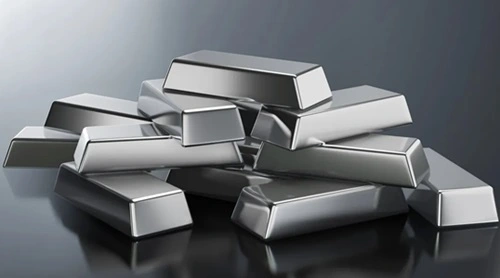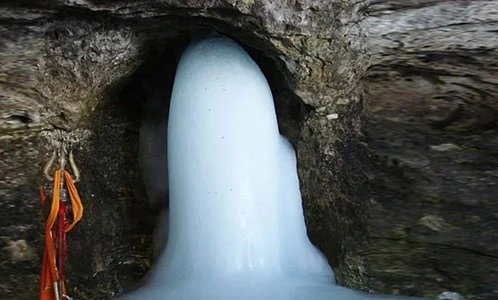Silver is one of the most intriguing and versatile metals on Earth. Known for its brilliant luster and remarkable conductivity, silver has been used for thousands of years in jewelry, currency, art, and industry. But there’s a lot more to silver than meets the eye! Here are over 10 fascinating facts about silver that highlight its unique properties, historical significance, and modern applications.

1. Silver is the Most Reflective Metal
Silver has the highest reflectivity of any metal, reflecting up to 95% of visible light. This makes it ideal for mirrors and reflective coatings. However, pure silver can tarnish easily when exposed to air and sulfur compounds, which is why most modern mirrors are coated with a thin layer of aluminum instead. Silver’s reflectivity also makes it a popular choice in jewelry, creating a bright shine that has made it a timeless favorite.
2. Best Conductor of Electricity and Heat
When it comes to conductivity, silver is unbeatable—it’s the most electrically and thermally conductive of all the elements. Silver is even more conductive than copper, which is why it’s used in high-end electrical applications, like circuit boards, solar panels, and electronics. Despite its effectiveness, copper is used more frequently because it’s less expensive, but silver remains essential for specialized equipment where high conductivity is crucial.
3. Silver Has Antibacterial Properties
Silver has been valued for its antibacterial properties for centuries, dating back to ancient times. The Greeks and Romans used silver vessels to store water and food, and during the Middle Ages, it was believed to protect against the plague. Today, silver nanoparticles are used in medical devices, bandages, and even clothing to help prevent the growth of bacteria. Silver-coated tools and wound dressings are also common in hospitals due to silver’s effectiveness in preventing infections.
4. Silver is Used in Solar Panels
As the world shifts toward renewable energy, silver has become an essential component in solar technology. Photovoltaic (PV) cells in solar panels use silver to conduct electrical current, and silver paste is applied to silicon cells to enhance efficiency. Each solar panel contains about 20 grams of silver, and with the rising demand for clean energy, silver’s role in solar technology is expected to increase in the coming years.
5. Silver is a Key Element in Photography
Before the advent of digital cameras, silver played a crucial role in traditional photography. Silver halides were used in photographic film to capture light, producing an image when exposed to it. Although digital photography has largely replaced film, silver is still used in some high-quality professional films and black-and-white photography. Its role in photography may have diminished, but it remains an essential part of the art form’s history.
6. The First Coins Were Made of Silver
Silver was one of the first metals used to make coins, dating back to around 600 BCE in ancient Lydia (modern-day Turkey). Due to its rarity, durability, and inherent value, silver quickly became a preferred choice for currency in many cultures. Silver coins were used in the U.S. until 1965, when rising silver prices led to a shift toward cheaper materials. Today, silver remains popular for collectible and commemorative coins, preserving its legacy as one of the original forms of money.
7. Silver is a Noble Metal
Silver belongs to a group of metals known as “noble metals,” which are highly resistant to oxidation and corrosion. This group includes gold, platinum, and palladium, which are all valued for their durability and resistance to tarnish. While silver can tarnish when exposed to sulfur, it doesn’t rust or corrode as readily as many other metals. This resistance makes silver an excellent choice for long-lasting items like jewelry, cutlery, and coins.
8. Mexico is the Largest Producer of Silver
Mexico is the world’s largest silver producer, followed by Peru and China. The country has a rich history of silver mining dating back to pre-Columbian times, and it remains a global leader in silver production. Cities like Taxco in Mexico are famous for their silver mines and craftsmanship, attracting tourists from around the world. Silver is an important part of Mexico’s economy and cultural heritage, and Mexican silver jewelry is highly prized for its quality and beauty.
9. Sterling Silver Isn’t Pure Silver
If you own silver jewelry, it’s likely made from sterling silver rather than pure silver. Sterling silver is an alloy consisting of 92.5% silver and 7.5% other metals, typically copper. Pure silver is too soft for most practical uses, so copper is added to strengthen it while preserving its color and luster. Sterling silver is highly durable and maintains its bright appearance, making it ideal for jewelry, cutlery, and decorative items.
10. Silver Plays a Role in Medicine
Silver is often used in the medical field because of its antibacterial and healing properties. Silver sulfadiazine, a topical cream containing silver, is commonly used to treat burns and prevent infections in open wounds. Additionally, silver ions are used in water purification and some medical implants to prevent bacterial growth. Silver’s role in medicine is constantly evolving, with ongoing research into its potential for treating infections and supporting wound healing.
11. Silver and the “Blue People” of Kentucky
Although rare, it is possible to turn a shade of blue due to long-term exposure to silver. Argyria is a condition that occurs when silver particles build up in the skin, causing it to turn blue or gray. This was famously observed in a family in Kentucky known as the “Blue Fugates,” whose skin turned blue due to a genetic trait that interacted with silver exposure. Although rare, argyria demonstrates the unusual effects silver can have on the body.
12. Silver Has Spiritual and Symbolic Meaning
Throughout history, silver has held spiritual and symbolic meaning in various cultures. In ancient times, it was associated with the moon, purity, and femininity. Alchemists believed silver to have magical properties, and many cultures used it in rituals to ward off evil. In modern times, silver remains a popular choice for religious artifacts and jewelry, often symbolizing purity, clarity, and protection.
13. Silver Can Be Found in Electronics
Silver’s excellent conductivity makes it a staple in the electronics industry. It’s used in printed circuit boards, electrical contacts, and switches. Because silver conducts electricity more efficiently than other metals, it’s preferred in high-end electronics like smartphones, computers, and televisions. With the growing demand for electronic devices, the need for silver in the tech industry continues to rise.
14. Used in Both Luxury and Everyday Items
Silver has a fascinating range of applications, from luxury items to everyday household goods. Fine silver is used for high-end items like jewelry, watches, and decor, while sterling silver can be found in kitchenware, such as cutlery and serving trays. Silver is also used in more unexpected places, like antibacterial fabrics for athletic clothing, anti-odor socks, and even on airplane windows for UV protection. This versatility highlights silver’s unique role in both functional and decorative items.
15. Silver Prices Fluctuate with Market Demand
Like gold, silver is a precious metal that fluctuates in price based on market demand and economic factors. However, silver is more affordable than gold, making it a popular investment option for people looking to diversify their portfolios. Silver prices can be influenced by industrial demand, jewelry trends, and currency fluctuations, making it both an investment and a widely-used commodity.
From its remarkable conductivity to its rich history in coinage and medicine, silver is a truly unique metal that touches our lives in many ways. Whether it’s the gleam of a piece of jewelry, the reliability of a smartphone, or the reflectivity of a mirror, silver plays a vital role in both everyday life and high-tech applications. As industries continue to find innovative uses for silver, this metal remains as precious and essential as ever. Its beauty, versatility, and functionality make silver a remarkable resource, one that will continue to fascinate and benefit society for years to come.



